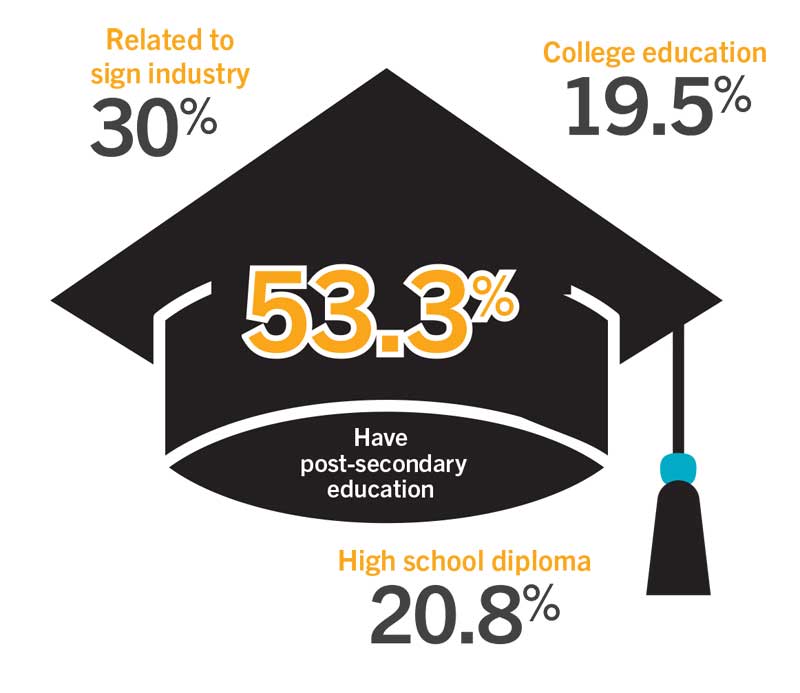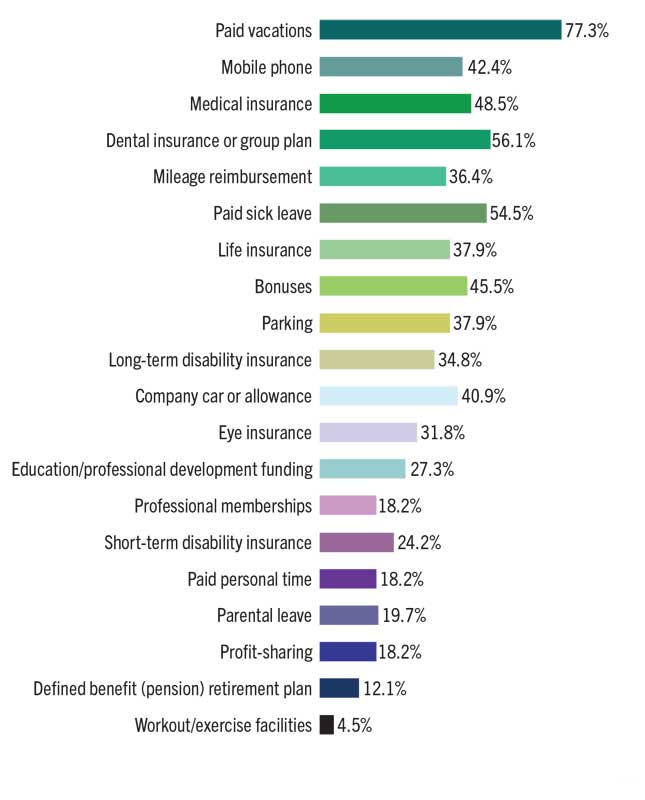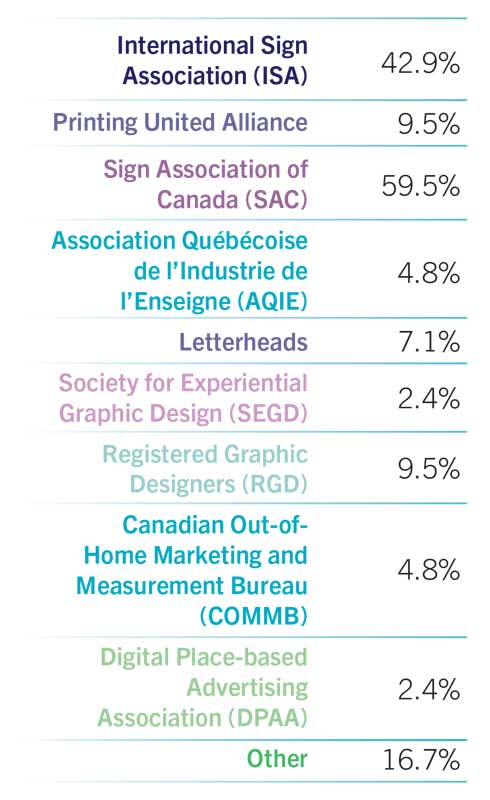Education
More than half of respondents (53.3 per cent) have earned a post-secondary degree, while 30 per cent have degrees related to the industry. This is down just 1.8 per cent compared to last year, but still a significant increase compared to 2020 and 2021. Less than one-quarter of respondents (19.5 per cent) have some college education, but no degree, or hold a high school diploma or equivalent (20.8 per cent).
Job satisfaction
This year’s survey revealed 73.5 per cent of all respondents are happy with their jobs, with 38.2 per cent being “more satisfied” and 35.3 per cent being “equally satisfied” compared to five years ago.
Working hours and benefits
Due to the nature of the business, the sign industry involves many occupations—from installers, fabricators, welders, and electricians to graphic designers, technical drafters, urban planners, permit specialists, sales representatives, and administrative staff. Depending on the project, deadlines, and teams involved, it may be necessary for certain employees to work longer hours. In fact, 31.9 per cent of respondents say they work between 41 and 50 hours per week, while another 33.3 per cent are on the job for more than 50 hours. Further, 30.6 per cent of respondents put in a typical 35-to-40-hour work week.
Industry associations
Professional associations help to connect similar businesses in the sign industry which all abide by a set code of ethics. These not-for-profit groups promote the welfare of the industry and the status of members in the community, as well as benefit the users of signs. The traditional boundaries of the sign industry have expanded due to advancements in technology and the evolution of the marketplace. Industry associations help members share knowledge with others by providing insight, guidelines, and, in some cases, industry best practices and standards. As a result, it can be helpful for companies to join these professional associations. Currently, 59.5 per cent of respondents are members of the Sign Association of Canada (SAC), while 42.9 per cent are members of the International Sign Association (ISA). Additionally, memberships to the Canadian Out-of-Home Marketing and Measurement Bureau (COMMB) and the Association of Registered Graphic Designers (RGD) have increased by 3.5 per cent and 1.9 per cent, respectively.





